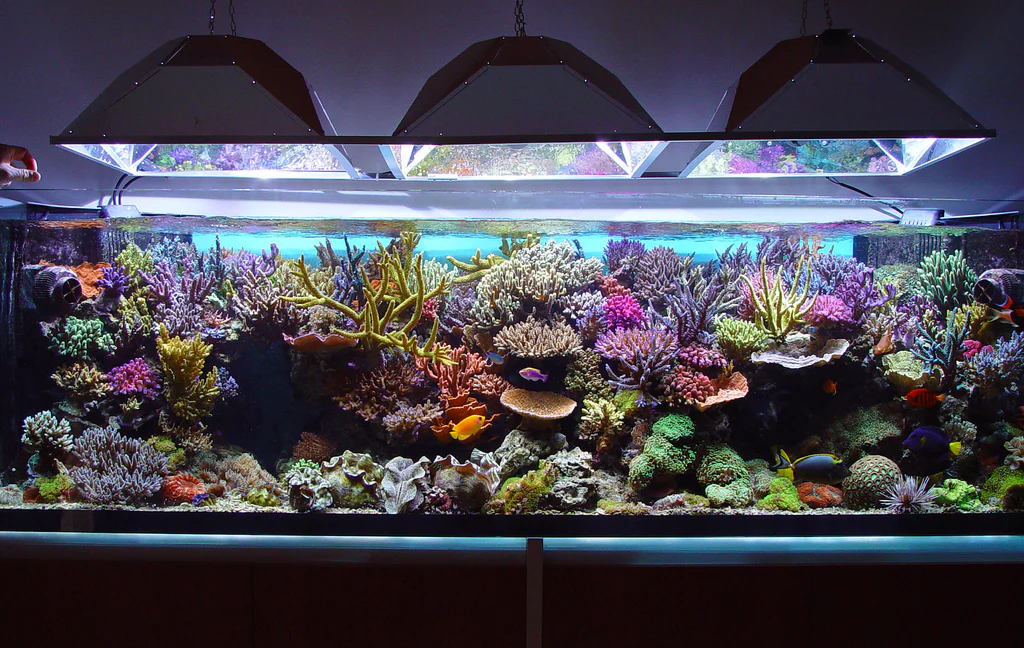How To Set Marine Fish Tank That’s Environmentally Friendly And Looks Amazing Too!
The guilt was slowly consuming me from the inside out.
Despite the fact that I cherished my marine fish tanks and the other animals I kept, as a marine biologist, the knowledge that all of my pets came from the wild made me feel sick to my stomach.
There is a very significant environmental effect that the saltwater aquarium trade has on coral reefs, as we highlighted in the last piece on three reasons why you may not want to possess a marine fish tank, and that influence is harmful to the ecosystem. The majority of fish, live rock, and invertebrates as well as a substantial proportion of corals marketed today all originate from their natural environments. Both the harvest of these wild species and the techniques used to obtain them might have a detrimental effect on the reef.
However, it is feasible to populate a successful marine fish tank with fish, live rock, and corals that were all bred in captivity or maintained in an aquarium as part of an aquaculture program.
When you populate your tank with specimens that were grown in captivity rather than wild-caught fish, you not only help the environment but also get additional advantages. Among these advantages are the occupants of the tank, who are:
- * Hardier and more suited to live in a marine fish tank
- * Easier to feed
- * Not as violent as wild-captured specimens
- * Less likely to have parasites or harbor infectious diseases
The truly encouraging news is that if you are interested in constructing a marine fish tank that is not only kind to the environment but also looks amazing, it is not too difficult to accomplish it. The selection of livestock that was produced in captivity or was raised in an aquaculture setting that can be kept in saltwater fish tanks is growing at a rapid rate.
The following is an outline of the many aquacultured alternatives that are available to you for your marine fish tank:
Live rock
Although the majority of live rock is still collected from the wild, it is possible to acquire live rock that was grown in an aquarium. This is not the first time I’ve done anything like this, and the quality of the rock that was delivered to me was exactly what I was looking for. The rock was covered with lovely pink and purple coralline algae, as well as miniature coral and anemone polyps. Additionally, there was an urchin and a small crab that had hitched a ride on the rock. I had this item sent to me from Tampa Bay Saltwater, and I would not hesitate to suggest them to anybody who is in the market for high-quality live rock for their saltwater aquarium.
Salt Water Aquarium Fish
Fewer than 10 percent of the fish that live in saltwater aquariums were bred in captivity. However, progress is being made, and if you choose from the captive-bred possibilities, you may still have a decent range of fish to fill your marine fish tank. This is because marine fish can be produced in captivity. For instance, the majority of clownfish, which are a highly popular type of aquarium fish, neon gobies, and dottybacks are all produced in captivity. These species are frequently labeled as having been “tank reared” or “captive bred,” and you may be able to find them in the fish market in your town if they have been aquacultured. In such cases, you may get them online from a variety of different vendors.
Corals
It’s estimated that around half of all corals marketed today originate from their natural habitat. On the other hand, the proportion of both hard and soft corals that originate from people and businesses who use fragmentation in order to cultivate corals for the purpose of reselling them is growing. It ought to not be too difficult to track down a varied offering of cultivated corals for the marine aquarium that you have at home. Again, you may check with the fish shop in your area, or you can go online and locate a lot of other sites that offer them. You might also look for a marine aquarium club in your area and inquire with its members to find out if any of them have corals that they have propagated and would be willing to sell.
Invertebrates
Aquacultured invertebrates for marine fish tanks are still very tough to come across, with the exception of some types of clams. We can only hope that things will be different in the not-too-distant future.
Although the price of aquacultured species is often more than that of their wild-caught relatives, the end product is typically more resilient individuals that are healthier for the environment. You can set up a marine fish tank that is totally built of specimens that were reared in captivity and yet have it look amazing because to the variety of fish, corals, and live rock that are now accessible.

